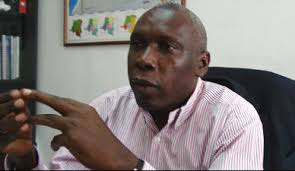By Byron Mutingwende
Forced marriage, child labour, female genital mutilation and other practices undermining girls’ health and rights threaten the world’s ambitious development agenda, warns the United Nations Population Fund (UNFPA), in The State of World Population 2016, released recently.
According to UNFPA Zimbabwe, in the country, child marriage is rife with one in three girls married before their eighteenth birthday.
“As well as stunting a child’s development and potential, this harmful practice also leads to a number of negative sexual and reproductive health outcomes such as adolescent pregnancy and maternal mortality and morbidities, such as obstetric fistula. The teenage fertility rate in Zimbabwe is currently estimated at 115 births per 1000 women aged 15 -19 years. According to the ZDHS 2015, 20.5% of the women (age 20-24 years) have had at least one live birth before the age of 18 years,” UNFPA said in a statement.
Practices such as these that harm girls and violate their human rights–starting at age 10–prevent them from realizing their full potential as adults and from contributing to the economic and social progress of their communities and nations. Without their contribution, the United Nations Agenda 2030 for Sustainable Development and its accompanying 17 Sustainable Development Goals may never be achieved.
Ten is a pivotal age for girls everywhere, as puberty approaches. In some parts of the world, a girl at this age enjoys limitless possibilities and begins making choices that will influence her education and, later, her work life. But in other parts, a girl who goes through puberty is suddenly seen as a commodity that may be bought, sold or traded, the UNFPA report shows. She may be forced to marry, pulled out of school and expected to start bearing children and begin a lifetime of servitude.
“Impeding a girl’s safe, healthy path through adolescence to a productive and autonomous adulthood is a violation of her rights,” UNFPA Zimbabwe Country Representative Cheikh Tidiane Cisse says. “But it also takes a toll on her community and nation. Whenever a girl’s potential goes unrealized, we all lose.”
The new development agenda, endorsed by world leaders in 2015, is the blueprint for countries’ social and economic progress for 15 years. It aims for equitable development that leaves no one behind. Removing the barriers that hold 10-year-old girls back today will increase the chances that the agenda will be a success, the report argues.
The State of World Population report notes that of the 125 million 10-year-olds today, 60 million are girls who are systematically disadvantaged at the global level as they move through adolescence into adulthood. Girls are less likely than boys to complete formal schooling at the secondary and university levels, are more likely to be in poorer physical and mental health, and will find it harder to get paid jobs.
The range of proven policy options available to governments has grown over the past decade. These include banning harmful practices, such as child marriage and providing cash transfers to parents of girls in poor households to help defray costs of schooling, and, thus keep girls in school longer. They also include providing life-skills training and age-appropriate comprehensive sexuality education to girls approaching puberty.
The challenge now, UNFPA’s State of World Population report says, is to scale up these interventions to reach more girls, especially the poorest and most vulnerable, by age 10.
“How we invest in and support 10-year-old girls today will determine what our world will look like in 2030,” Cheikh Tidiane Cisse says. “With support from family, community and nation, and the full realization of her rights, a 10-year-old girl can thrive and help bring about the future we all want.”
According to statistics, girls are less likely than boys to complete schooling and more likely to face forced marriage, child labour, female genital mutilation and other undermining practices.
More than half of the world’s 60 million 10-year-old girls live in the 48 countries with the worst gender inequality and $21 billion a year dividend for developing countries can be unlocked if all 10-year-old girls complete secondary education.
